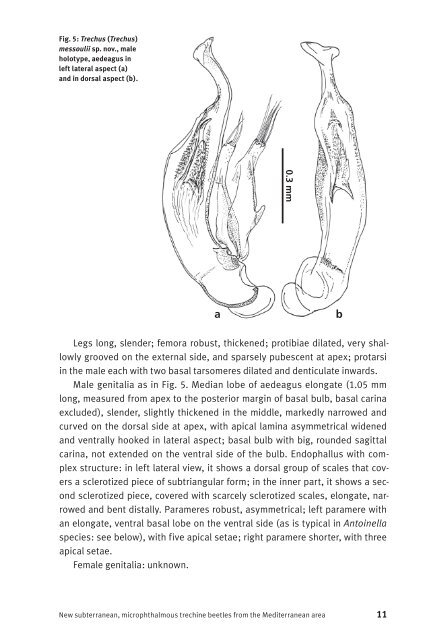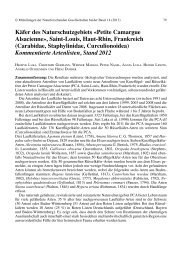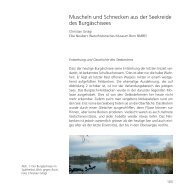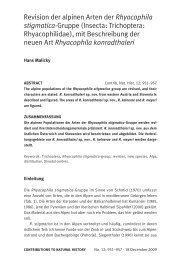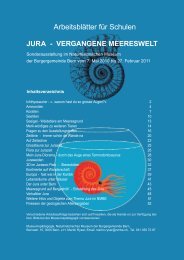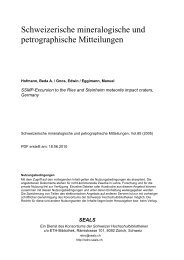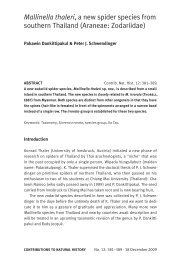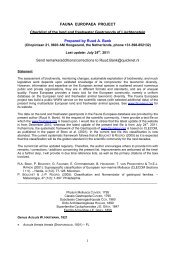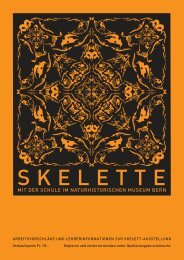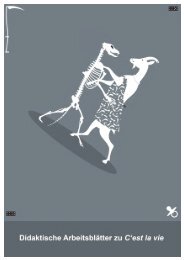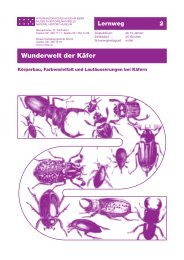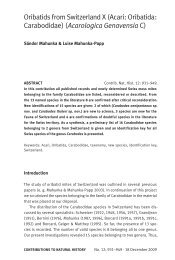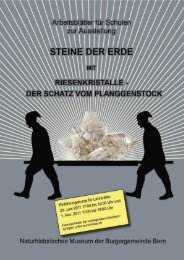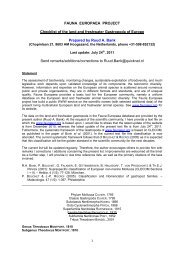Biharotrechus - Naturhistorisches Museum Bern
Biharotrechus - Naturhistorisches Museum Bern
Biharotrechus - Naturhistorisches Museum Bern
You also want an ePaper? Increase the reach of your titles
YUMPU automatically turns print PDFs into web optimized ePapers that Google loves.
Fig. 5: Trechus (Trechus)<br />
messoulii sp. nov., male<br />
holotype, aedeagus in<br />
left lateral aspect (a)<br />
and in dorsal aspect (b).<br />
Legs long, slender; femora robust, thickened; protibiae dilated, very shallowly<br />
grooved on the external side, and sparsely pubescent at apex; protarsi<br />
in the male each with two basal tarsomeres dilated and denticulate inwards.<br />
Male genitalia as in Fig. 5. Median lobe of aedeagus elongate (1.05 mm<br />
long, measured from apex to the posterior margin of basal bulb, basal carina<br />
excluded), slender, slightly thickened in the middle, markedly narrowed and<br />
curved on the dorsal side at apex, with apical lamina asymmetrical widened<br />
and ventrally hooked in lateral aspect; basal bulb with big, rounded sagittal<br />
carina, not extended on the ventral side of the bulb. Endophallus with complex<br />
structure: in left lateral view, it shows a dorsal group of scales that covers<br />
a sclerotized piece of subtriangular form; in the inner part, it shows a second<br />
sclerotized piece, covered with scarcely sclerotized scales, elongate, narrowed<br />
and bent distally. Parameres robust, asymmetrical; left paramere with<br />
an elongate, ventral basal lobe on the ventral side (as is typical in Antoinella<br />
species: see below), with five apical setae; right paramere shorter, with three<br />
apical setae.<br />
Female genitalia: unknown.<br />
New subterranean, microphthalmous trechine beetles from the Mediterranean area<br />
0.3 mm<br />
a b<br />
11


